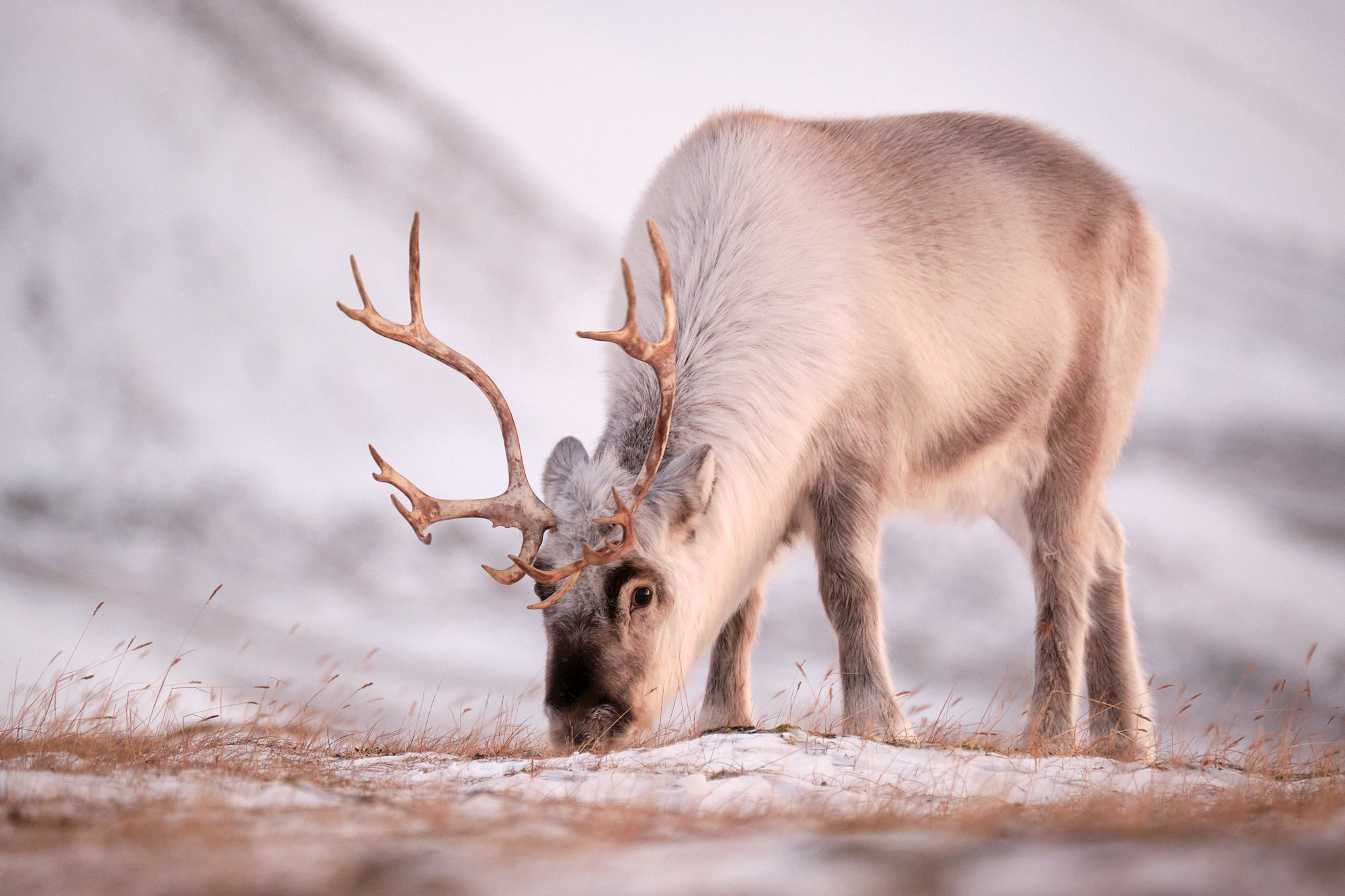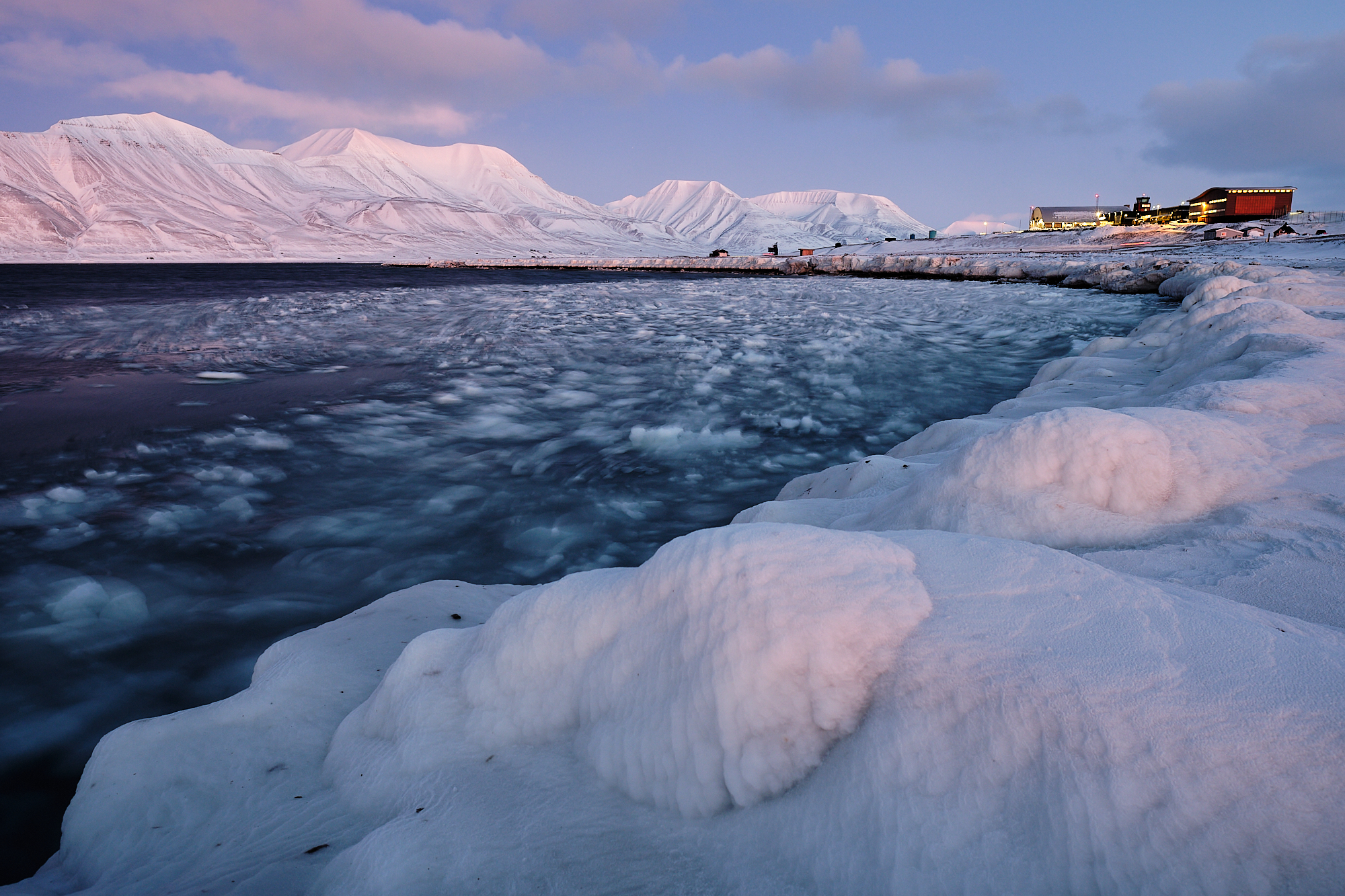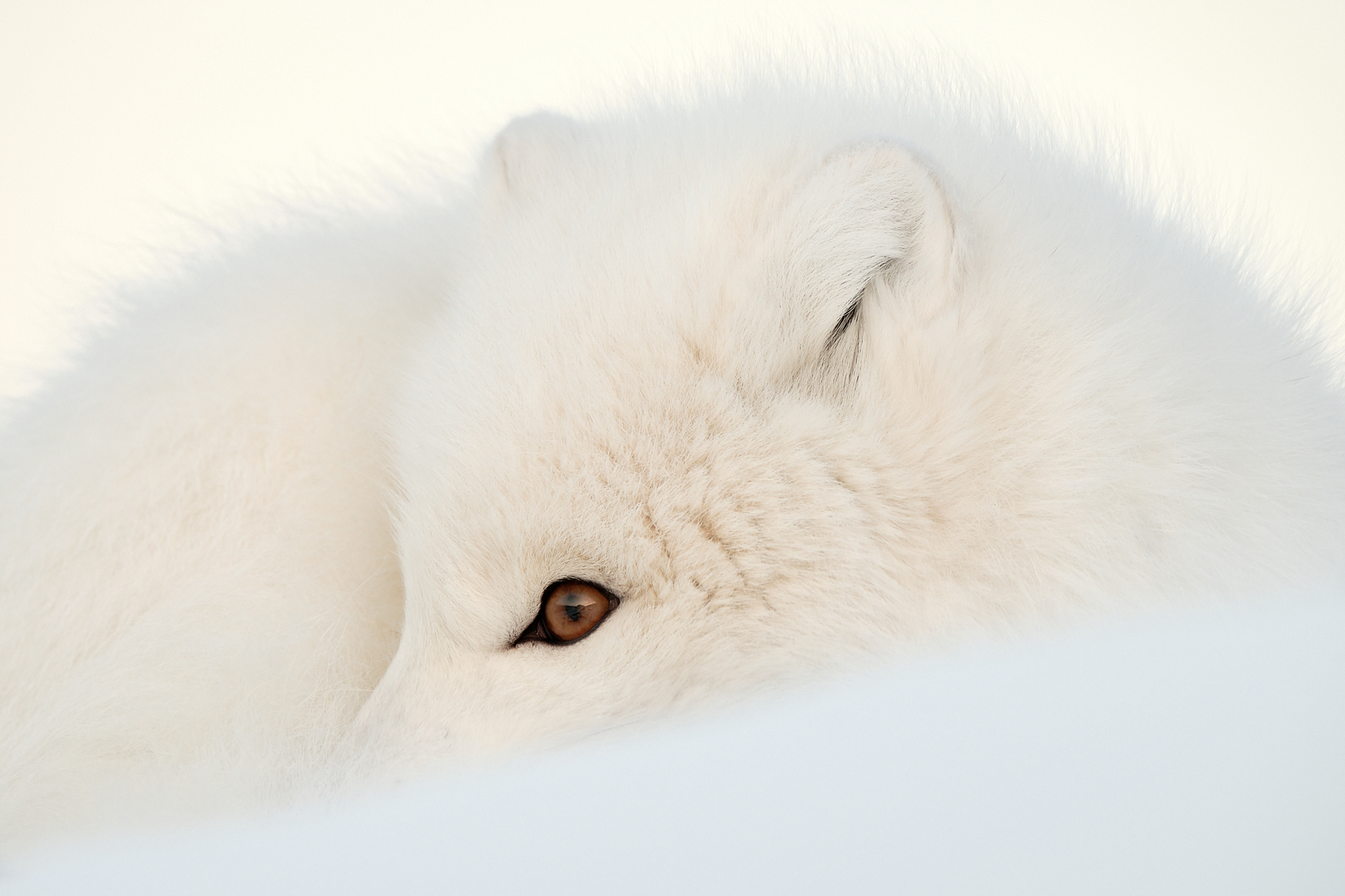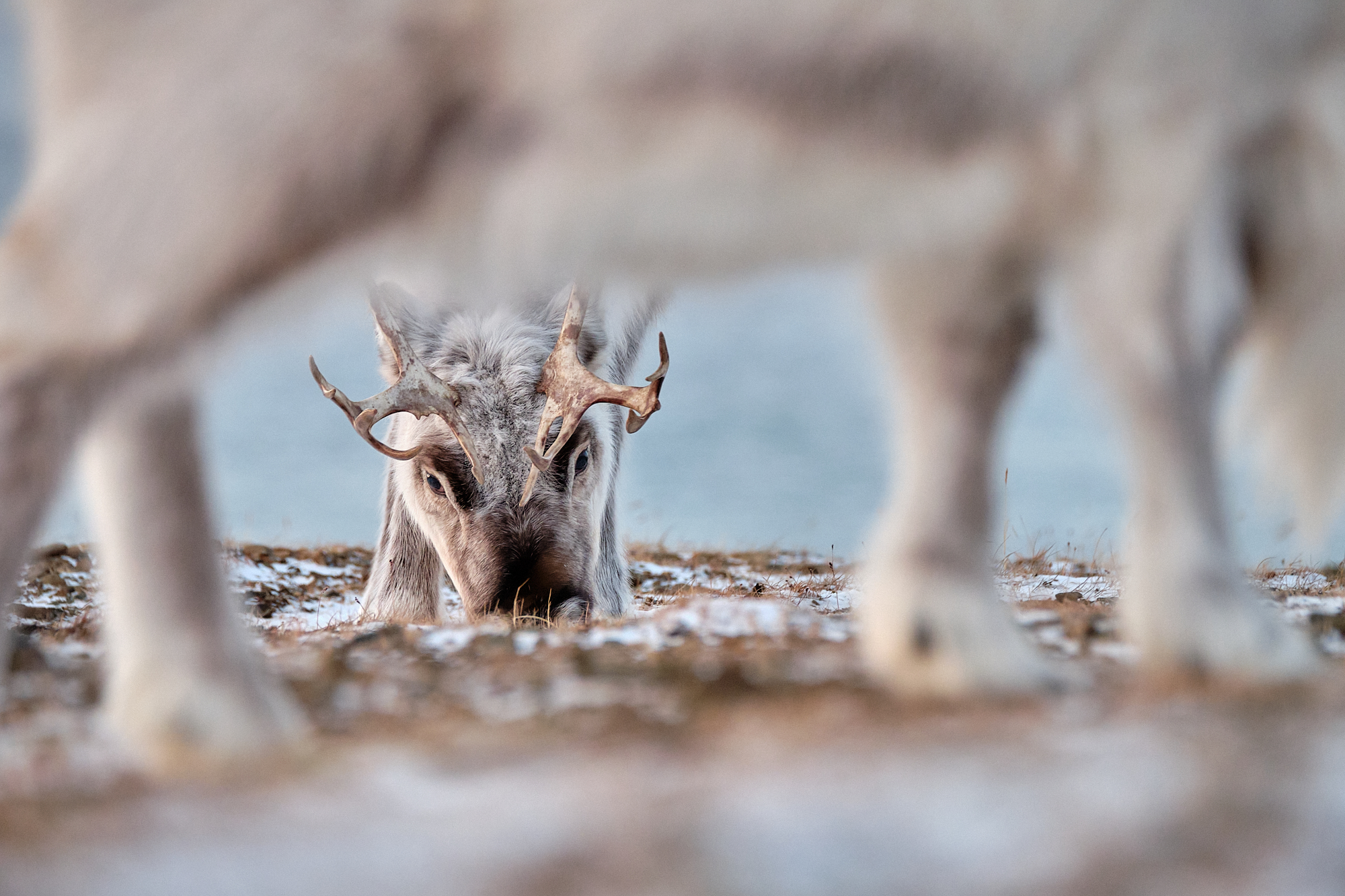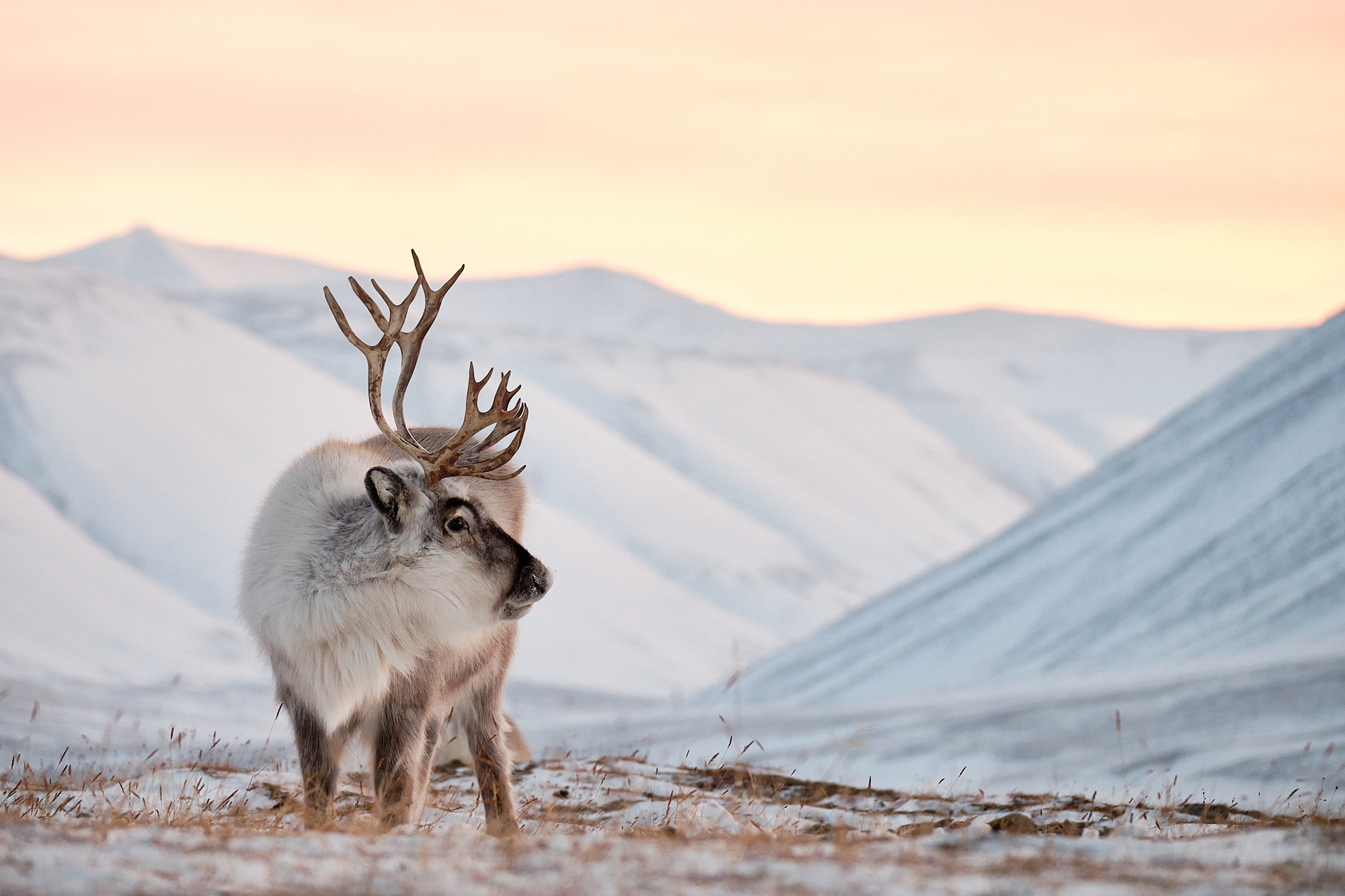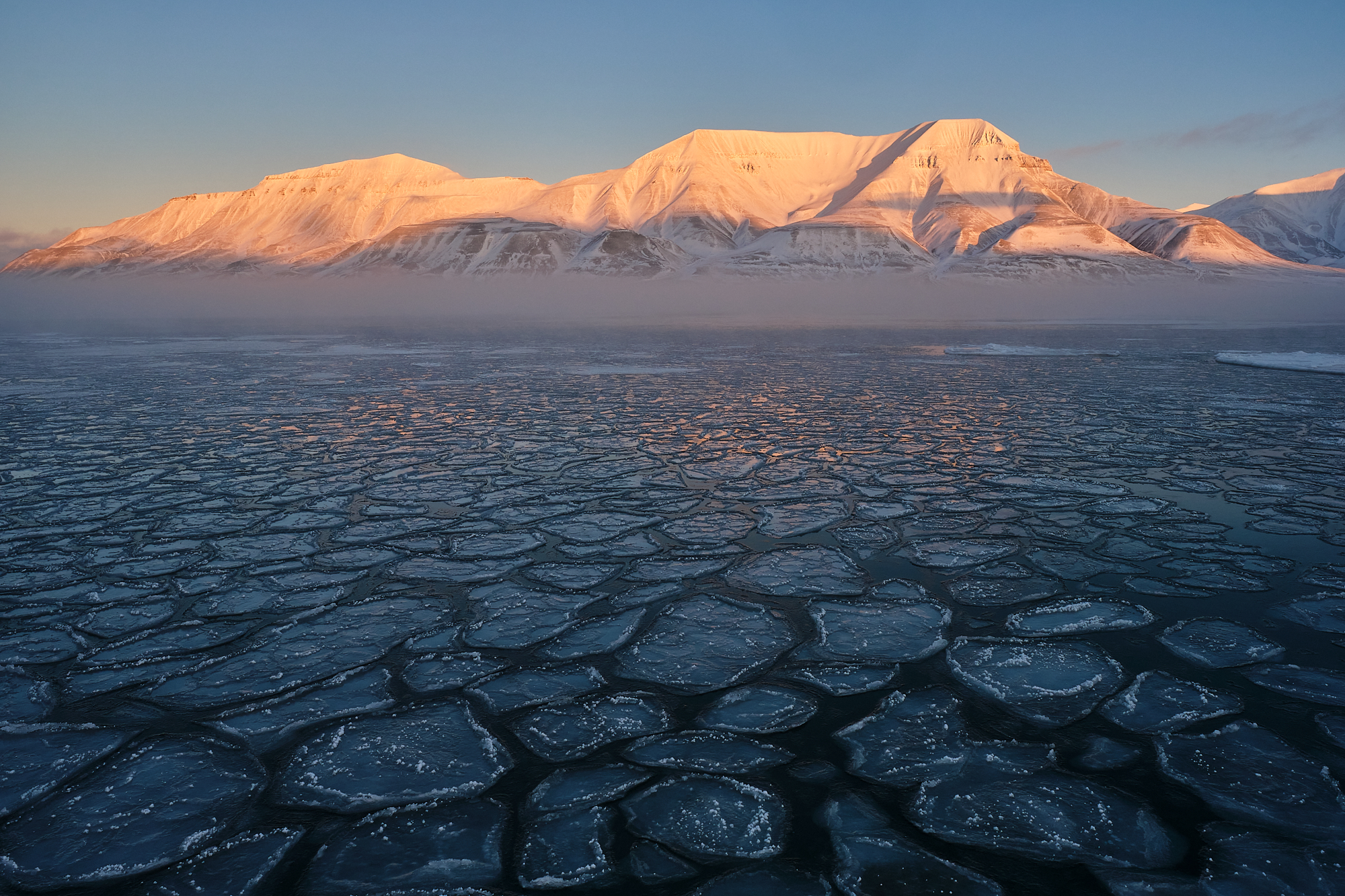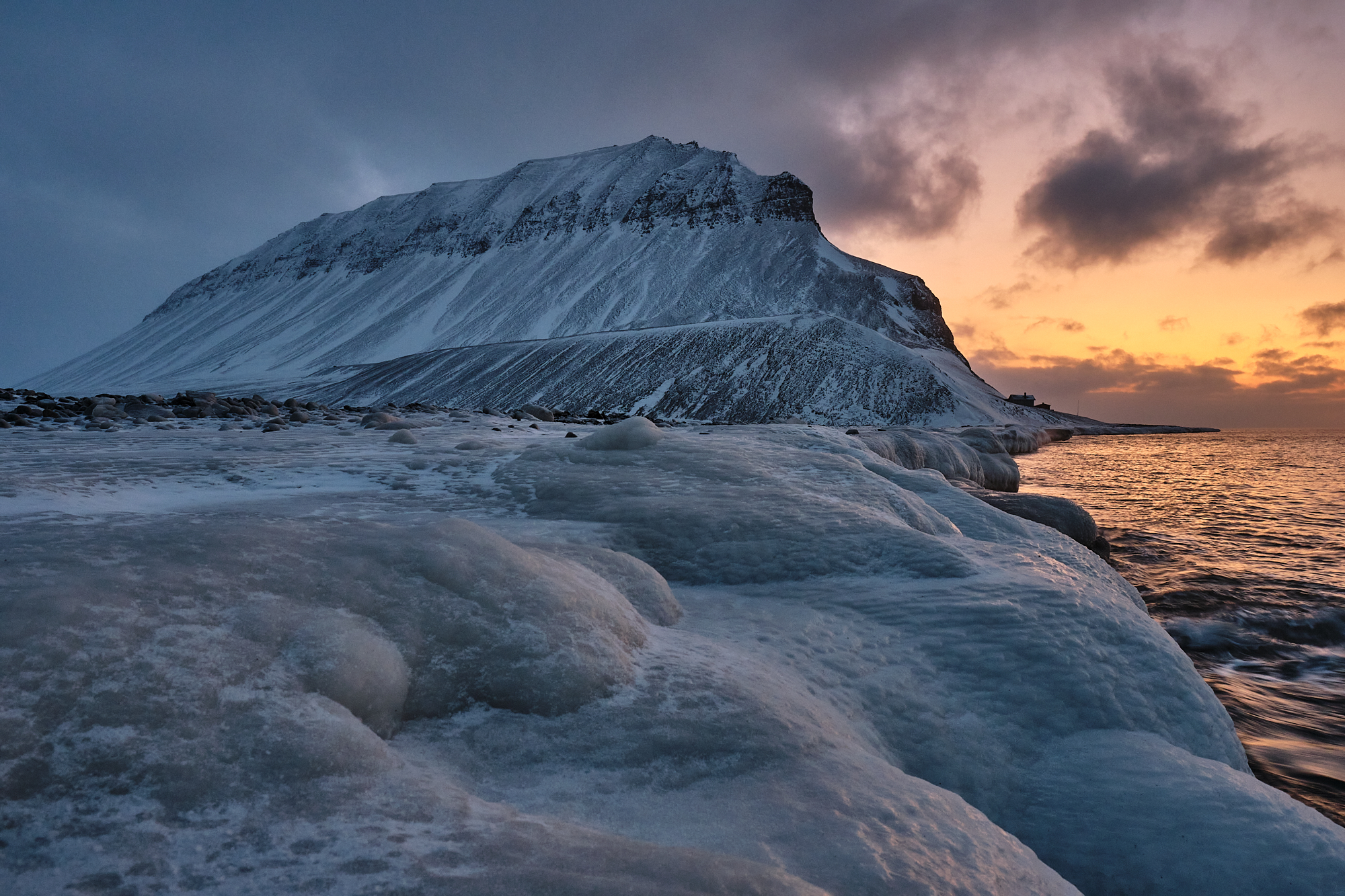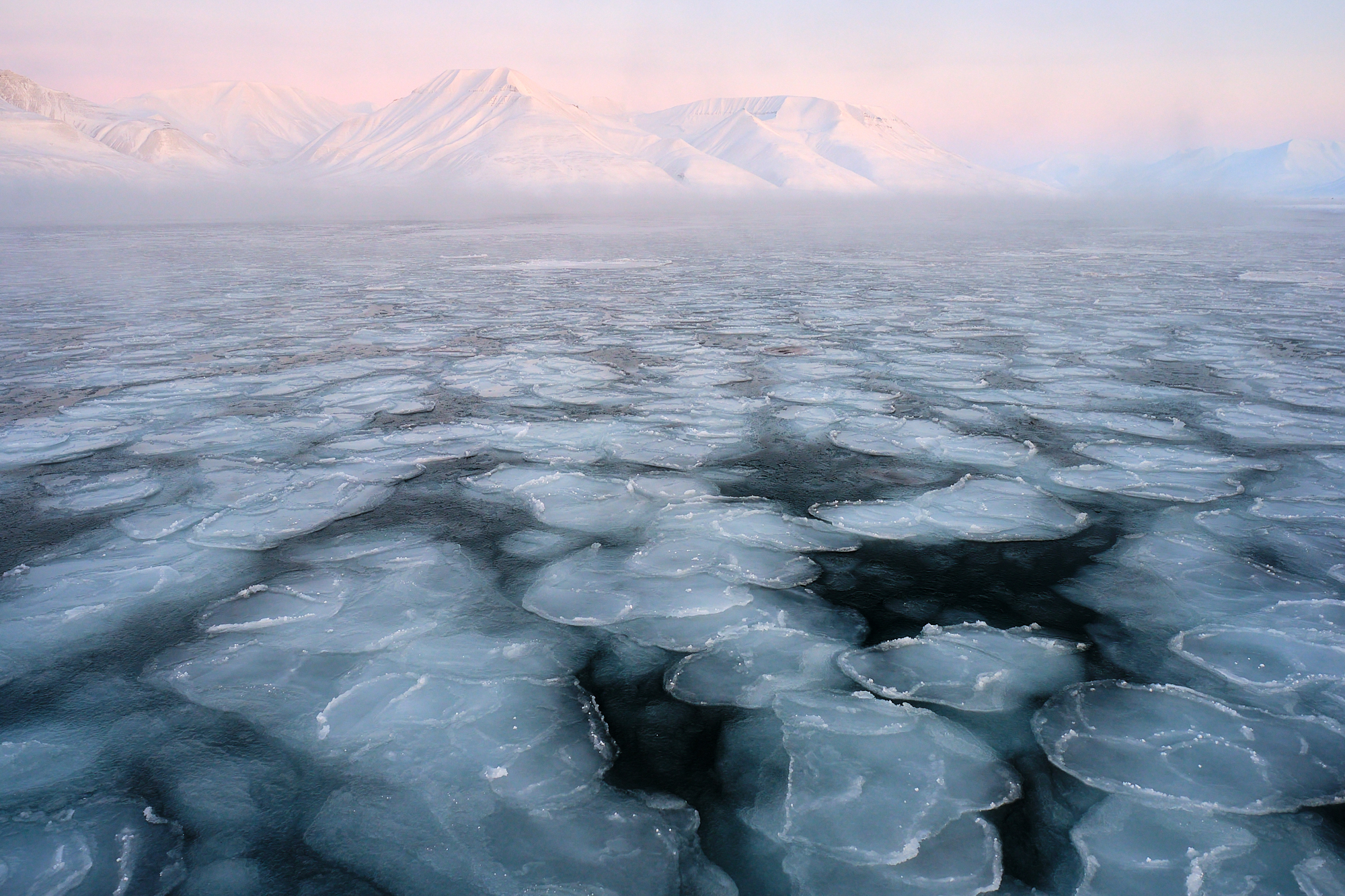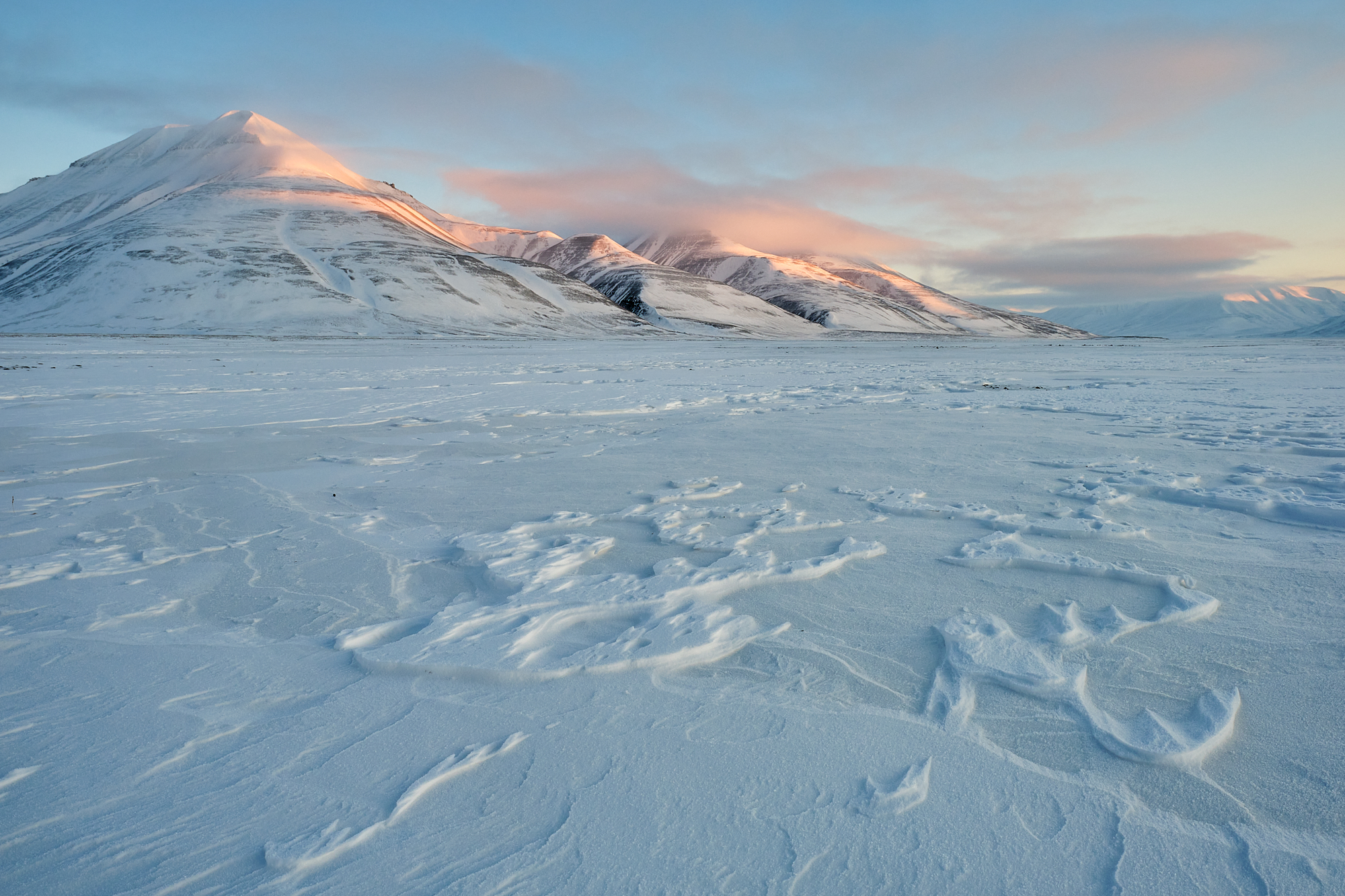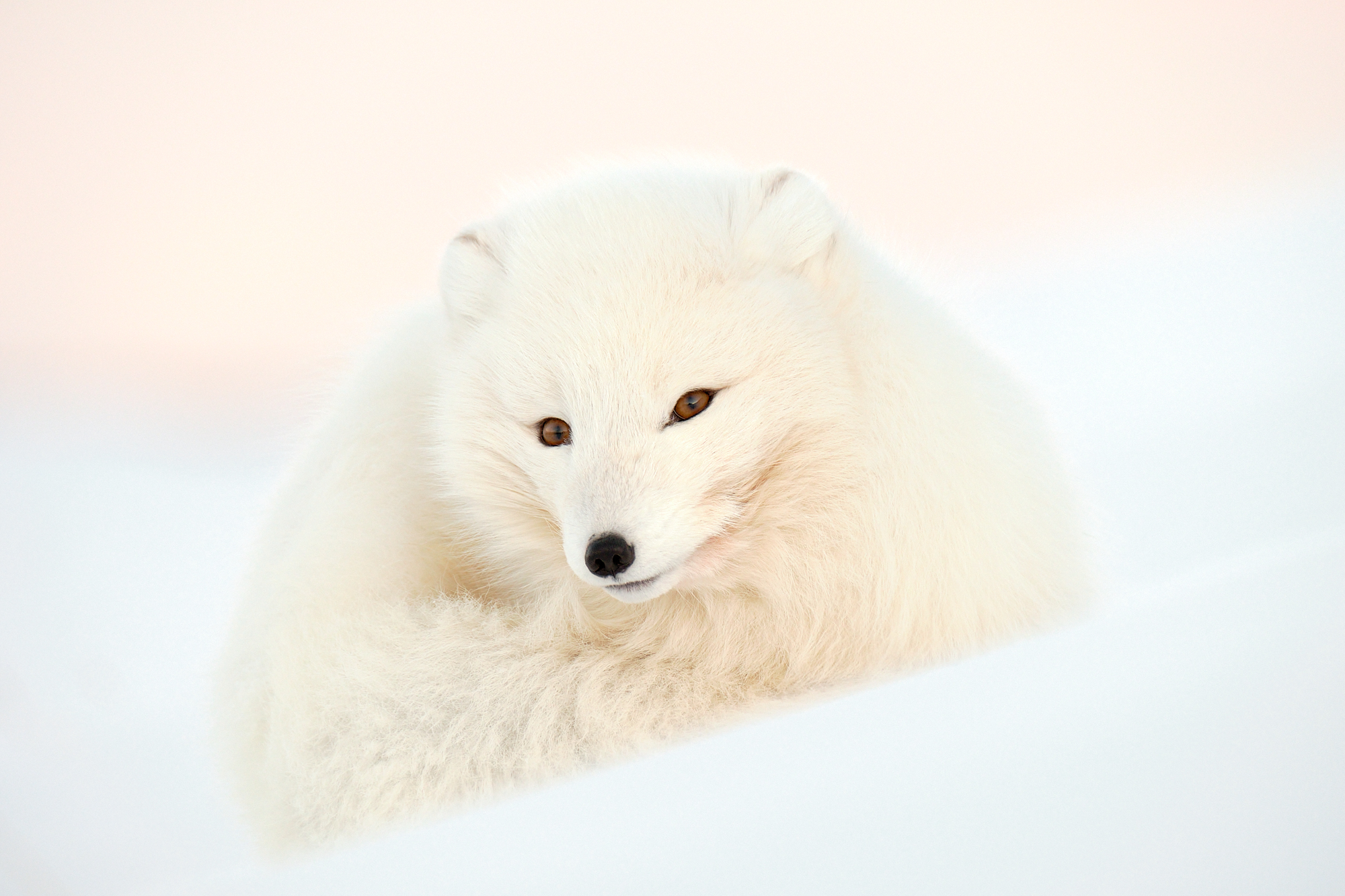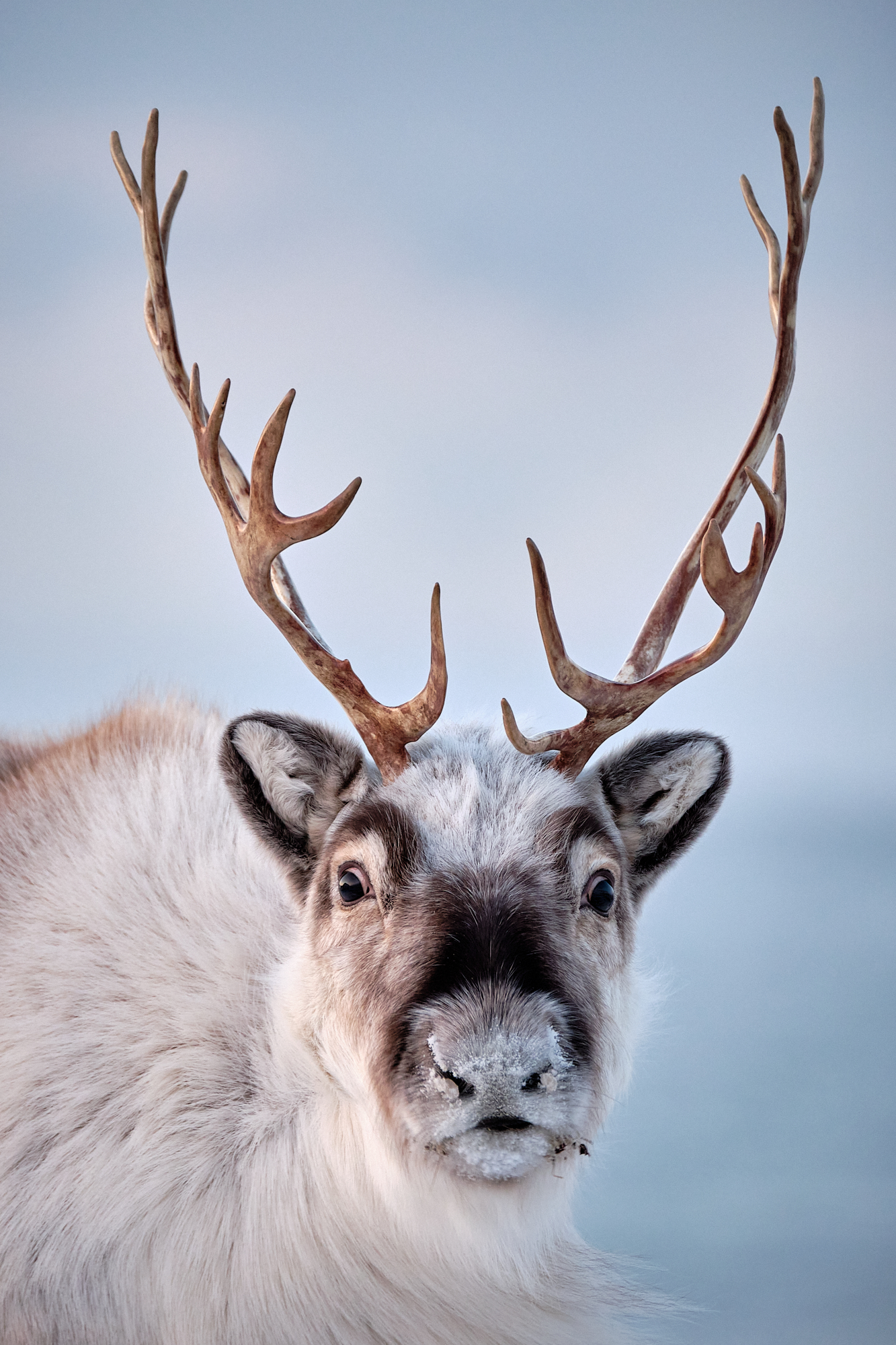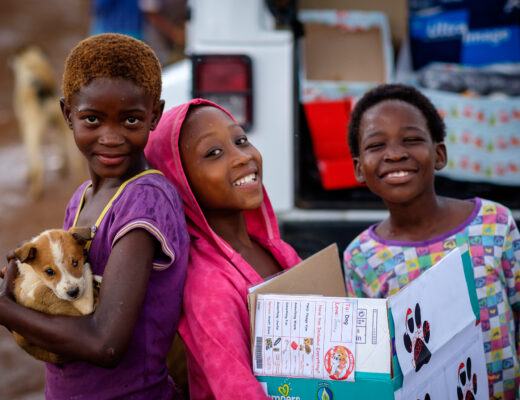I traveled to a lot of countries and biotopes with my camera to photography wildlife and nature, but I like the cold arctic regions and especially the Svalbard best. This year I went there during a time when the day is returning after a four-month polar night. The first sun rays illuminate the frozen landscape, but warmer days are just a distant dream. What does it take shooting nature when daytime temperatures fall to 30 degrees Celsius below zero?
The sun travels its short everyday path low over the horizon and during the first days, it does not even get above the surrounding mountains. I know that it is there, but I cannot rely on its help to fight the frost. Because of the wind-chill effect, I feel like it’s ten more degrees colder. Just staying in such a cold is a challenge that I have to be well prepared for. Given the conditions, I quickly set a goal: I will be happy if I take three good photos of wild animals during the twelve-day trip.
To my delight, the very next day brings the first opportunity to photograph polar foxes. The frost gives me a really hard time, but the unexpected benefit too — these small, but incredibly tough beasts obviously don’t want to waste the warmth and energy, so they are much more tolerant of my presence than they were during my previous trips in different seasons. I am taking a few photos and gaining first experiences, how my gear — and especially batteries — will pass the harsh conditions test. As long as I walk through the land with cameras in my backpack, I keep batteries in warmth under my jacket. I use a few Fujifilm NP-W126s and some third-party batteries from Patona. I test the individual batteries in my X-T2 and X-T3 bodies, and it quickly becomes clear, that both the manufacturer and the condition of the battery matter a lot. The oldest “yellow” Patonas are almost not capable of power the cameras — they die after few shots, and thus they are not usable in this weather at all. When I tried them to charge later, the charger quickly signalized they are full — they just cannot deliver enough power in such low temperatures.
Relatively new “blue” Patonas Platinum are doing a bit better, but they are still dying too quickly. Unlike the older ones, they allow me to shoot after the camera reports empty battery — I just need to shut the camera off and on, take another shot, the camera dies again, and so on. It reminds me of photographing with an old manual camera with film advance lever :). Interestingly, all these batteries work well in normal temperatures, but cold immediately reveals the condition of each of them. By the way, they prove too, that one of the most power-hungry parts of the mirrorless camera is a viewfinder — sometimes they can power the camera when I photograph using rear LCD but die immediately when I put the camera to my eye and sensor activates the EVF.
Clear winners are original Fujifilm batteries. The oldest one shows some fatigue too, but newer ones (about a year and two years old) do a good job. Their life is shorter than in higher temperatures, but that’s what I expected. With two batteries, I could easily photograph and shoot some 4K videos for about five or six hours of daylight. The downside of wildlife photography is that you need to be prepared for shooting when some opportunity occurs, so after I put batteries inside my cameras for the first time, I left them there. With all those layers of clothing and thick gloves, it is impossible to pull out and install the batteries quickly enough when an animal appears.
By the way, I appreciate that in case of the sudden death of the batteries which often happens after a picture was taken, every single image has always been safely stored on both memory cards.
It quickly emerged that the quality and condition of batteries are crucial, but everything else worked great. The LCDs slowed down as expected, but it didn’t limit me too much. Sometimes it had funny consequences — when my friend used the live view on his DSLR and moved the focusing point, the “ghost“ point remained in the previous place for a while. No similar phenomena appeared on my Fujifilm cameras, but the fast movement was not as smooth as usual. Mechanically, everything worked like a charm — the shutter, buttons, wheels, joystick…
It is a well-known fact, that mirrorless cameras need more power, but I am very happy this trip proved to me, that I can use my Fujifilm gear even in such extreme circumstances without major issues — the only requirement (but essential) is to have quality batteries in a good condition. It’s just a pity, that I didn’t get the X-T4 fo testing on time — it would benefit from its battery with almost double the capacity of NP-W126s. Fujifilm cameras can also be powered with a power bank which opens possibilities for more demanding situations like photographing long exposures, time-lapses, or shooting longer videos. However, you have to be careful when using this method, because when the camera is off or in sleeping mode, the battery inside starts to charge automatically, which would damage it when the temperature is below zero.
If you wonder, if your batteries can handle photographing in normal winter conditions, don’t worry about it much. When the temperature rose to pleasant 16 degrees Celsius below zero one day, batteries worked almost normally, which confirmed my previous experience from winter expeditions to the mountains. Moreover, if you shoot motives like landscape, you can keep batteries under your jacket between photographing and extend its life noticeably. I can only recommend you to choose a pocket wisely — you don’t want them to interfere with straps of your backpack (quality jackets often have main pockets placed a bit higher for easier use with waist belt), and they have to be easily accessible because you don’t want to unzip and zip again many layers in cold weather and with clumsy gloves. Your batteries could also get wet because of sweating when you walk — I carry them in the inner pocket of the top layer packed into the small neoprene pouch.
And when we are talking a bit about clothing, I have one more practical tip for you. In such cold weather, you should cover your face to keep warm. However, breathing through the fabric causes that LCD and viewfinder cover with moisture, which quickly freezes. So that I prefer to wear a merino wool neck warmer which I can easily drag it down from my face for the while I am shooting. If you like a balaclava more, you should look for models that allow uncovering your mouth and nose.
I definitely could not omit another issue with moisture: the condensation forming in cameras and lenses when you come back to warmth. You must always let the gear warm up slowly to prevent it. If it is possible, I keep the backpack in a colder room (hall, veranda), and I never open it for some time, which helps with warming the gear gradually and create another barrier against the moisture. Anyway, it depends on the quality of your backpack — I have had some, which got completely wet inside after returning to warmth from cold conditions, but now I use f-stop Lotus, which kept my gear dry even when the temperature outside and inside differed by 50 degrees Celsius. Just for sure, I also carry a few silica gel sachets inside the backpack, which can absorb moisture.
However, let’s talk about photographing again. It is not only challenging for the gear but the photographer too. Hands and feet suffer from the cold the most. As I mentioned already, moving helps a lot to keep your body warm, but it is much harder to resist when you keep still during shooting. It is surprising, how quickly the frost gets through three levels of gloves and starts biting your fingers. Holding the icy-cold metal surface of a camera or lens with a firm grip of fingers causes a physical stabbing pain within a few minutes. It happened to me several times that I couldn’t press the camera shutter button because of the pain in my fingers, and I had to give up the shot and quickly start to move to get warm again. No photo is worth dangerous frostbites.
The ability to control the cameras is very important too. It is much easier if you can take off thick outer gloves, but this is not a good idea in such cold — or at least not for more than a few dozens of seconds. It was during the shooting in the Arctic that I appreciated manual controls the most in the whole time I use Fujifilm gear. My friends with DSLRs doubted them when I switched to Fujifilm and even some brand fans sometimes state that they are not as much important for them. I definitely love and need them, and I hope that they won’t disappear from future models of Fujifilm cameras. It is very hard to turn a small front or rear wheel or press the needed button with a finger in a coarse winter glove, but it is quite easy to set the exposure compensation or the shutter speed with the upper dials. For some people, these controls are just a part of the camera look, but photographing far beyond the Arctic Circle has proven that they are extremely practical (together with joystick and aperture ring on the lens).
I could write an article maybe twice as long about clothes and other equipment. For example, about completely useless hand warmers, which may supposedly burn you according to the warning printed on them, but in these conditions, they barely became lukewarm. About snacks that you have to carry in your pockets because they freeze to stone in the backpack. About the fact that the only chance to preserve water in a liquid state is a high-quality vacuum flask. Maybe I’ll write about all these things one day.
During almost two weeks on Svalbard, I had some great opportunities to photograph foxes and reindeer. I saw how the frost turned the seawater first into slush and finally into ice. I saw aurora borealis over Longyearbyen. I watched, how the returning sun was illuminating the mountains on the opposite side of the bay and how its rays were reaching a little lower every day until I could expose myself to them for a magical moment at the end of my trip. These are experiences that made it worthwhile to visit Svalbard in the winter. And what about accomplishing my photographic goal? I overcame it at the end — instead of the planned three, I came back with four photos, which I am really happy about 🙂


